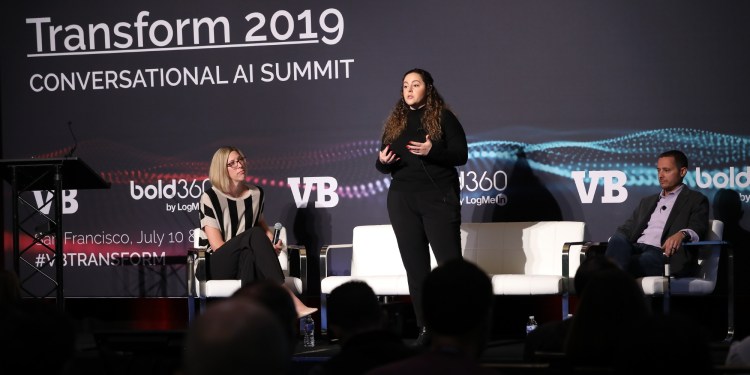Personalization is a key to building customer trust. But such tools can also go too far. Companies risk personalizing an offering so much that a user’s view of what’s available is restricted. Beyond that, high levels of personalization can be downright creepy.
“I think the trick is to ask permission, you have to be transparent about it. It can’t be a surprise,” said Chris Williams, chief product officer at iHeartMedia, at Transform 2019 in San Francisco today.
Thinking about personalization from the experience level of the customer, including what’s comfortable, is essential, added Chris Hansen, senior director for digital at TGI Fridays.
Hansen said he focuses on three steps when it comes to personalization.
June 5th: The AI Audit in NYC
Join us next week in NYC to engage with top executive leaders, delving into strategies for auditing AI models to ensure fairness, optimal performance, and ethical compliance across diverse organizations. Secure your attendance for this exclusive invite-only event.
- Identify a problem
- Tie it to your business goals
- Find how the technology will help solve that problem
By treating user habits as the basis for recommendations — like noting which meal a customer tends to order on a particular weekday evening and then suggesting the same meal on that same evening the following week — TGI Fridays has been able to come off as cool, not creepy, according to Hansen. Most customers are aware that apps collect a number of data points and that they need data in order to make recommendations. Offering a solution to the problem of trying to figure out what to eat also dovetails into TGI Fridays’ business goals.
With its personalization tools, TGI Fridays has increased engagement on social channels by more than 500%, and online revenue has grown by more than 100%, Hansen said.
DoorDash also relies on identifying user habits to key in context and make the right recommendations. The company found that email reminders were a simple way to stay on customers’ minds, said Jessica Lachs, vice president of analytics at DoorDash. This helped the company not only improve its click-to-open rate, but conversion rates, as well.
Again, customer experience is at the forefront of everything DoorDash is pursuing. “All of the testing that we’re doing is to improve [the experience] for customers,” she said.
From email click-throughs, DoorDash was better able to predict the kinds of restaurants customers might be interested in, based on previous places they had dined, Lachs said.
Companies need to look for contextual clues and remember that being straightforward about what their tools do will go a long way toward making the customer feel comfortable, not creeped out.
iHeartMedia, for example, will alert a user to its audio recommendations for multiple activities as opposed to just one — since users might have different playlists for their morning routines than they do workouts, for instance, and so personalizing for a specific user is actually personalizing for multiple contexts.
“And we found that the more and more we got it right, the byproduct of that was that users who are subscribers to one of our on-demand services had a higher retention rate, because we built up radio trust with them,” Williams said.
“Hopefully it’s not too creepy for you.”

